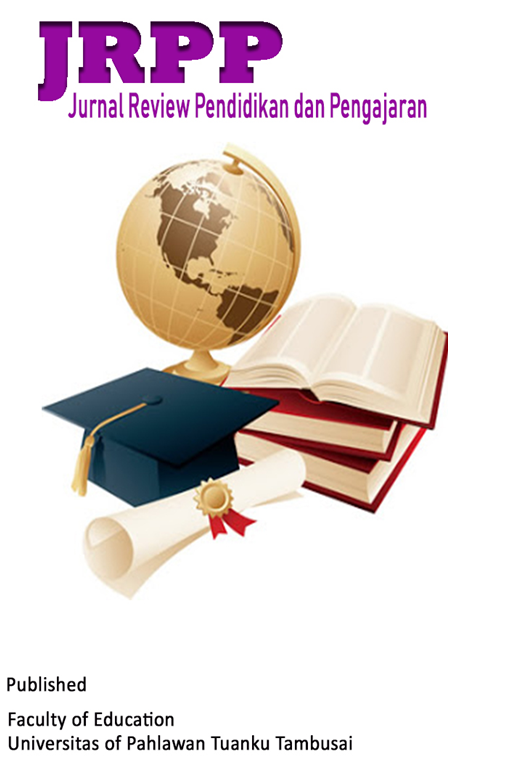OPTIMALISASI KETERAMPILAN ANALISIS DATA: PELATIHAN GSCA PRO UNTUK MAHASISWA MAGISTER MANAJEMEN
DOI:
https://doi.org/10.31004/cdj.v5i6.37257Keywords:
SEM, GSCA, GSCA ProAbstract
Di era informasi saat ini, kemampuan untuk mengolah dan menganalisis data menjadi sangat penting, terutama bagi mahasiswa program Magister. Metode Partial Least Square Structural Equation Modeling (PLS-SEM) dan Generalized Structured Component Analysis (GSCA) menyediakan cara untuk menganalisis hubungan kompleks antar variabel. Namun, mahasiswa S2 Magister Manajemen Universitas Pattimura menghadapi kesulitan dalam memahami dan menerapkan metode ini, termasuk penggunaan aplikasi GSCA Pro. Oleh karena itu, kegiatan ini dirancang untuk memperkenalkan konsep SEM dan GSCA Pro, serta melatih mahasiswa dalam penggunaan aplikasi tersebut. Kegiatan ini dilaksanakan secara daring, mencakup teori, praktik, dan diskusi. Hasil kegiatan ini menunjukkan peningkatan pemahaman dan keterampilan mahasiswa dalam analisis data, yang diharapkan dapat menyelesaikan tugas akhir dan publikasi ilmiah. Sehingga kedepannya, disarankan agar kegiatan ini dilakukan secara rutin dan menyediakan sedi pendampingan untuk lebih memperdalam penggunaan alat analisis data. Dengan pendekatan ini, mahasiswa diharapkan dapat lebih siap menghadapi tantangan dalam penelitian akademik.References
Cho, G., & Choi, J. Y. (2020). An empirical comparison of generalized structured component analysis and partial least squares path modeling under variance-based structural equation models. Behaviormetrika, 47(1), 243–272. https://doi.org/10.1007/s41237-019-00098-0
Cho, G., Hwang, H., Sarstedt, M., & Ringle, C. M. (2020). Cutoff criteria for overall model fit indexes in generalized structured component analysis. Journal of Marketing Analytics, 8(4), 189–202. https://doi.org/10.1057/s41270-020-00089-1
Hair, J. F., Hult, G. T. M., Ringle, C. M., Sarstedt, M., Danks, N. P., & Ray, S. (2021). Partial Least Squares Structural Equation Modeling (PLS-SEM) Using R. https://doi.org/10.1007/978-3-030-80519-7_5
Hwang, H., Cho, G., & Choo, H. (2024). GSCA Pro—Free Stand-Alone Software for Structural Equation Modeling. Structural Equation Modeling, 31(4), 696–711. https://doi.org/10.1080/10705511.2023.2272294
Jung, K., Panko, P., Lee, J., & Hwang, H. (2018). A comparative study on the performance of GSCA and CSA in parameter recovery for structural equation models with ordinal observed variables. Frontiers in Psychology, 9(DEC), 1–10. https://doi.org/10.3389/fpsyg.2018.02461
Langga, A., Kusumawati, A., & Alhabsji, T. (2021). Intensive distribution and sales promotion for improving customer-based brand equity (CBBE), re-purchase intention and word-of-mouth (WOM). Journal of Economic and Administrative Sciences, 37(4), 577–595. https://doi.org/10.1108/jeas-03-2019-0041
Mangesti Rahayu, S. (2019). Mediation effects financial performance toward influences of corporate growth and assets utilization. International Journal of Productivity and Performance Management, 68(5), 981–996. https://doi.org/10.1108/IJPPM-05-2018-0199
Pirani, S. A. (2024). Navigating the Complexity of Sample Size Determination for Robust and Reliable Results. International Journal of Multidisciplinary Research & Reviews, 3(2), 73–86. https://doi.org/10.56815/ijmrr.v3i2.2024/73-86
Ratna, S., Astuti, E. S., Utami, H. N., Rahardjo, K., & Arifin, Z. (2018). Characteristics of tasks and technology as a driver of task-technology fit and the use of the hotel reservation information system. VINE Journal of Information and Knowledge Management Systems, 48(4), 579–595. https://doi.org/10.1108/VJIKMS-05-2018-0035
Samsir Samsir. (2018). The effect of leadership orientation to innovation and its relationship to competitive advantages of small and medium enterprises in Indonesia. International Journal of Law and Management, 34(1), 1–5.
Sarstedt, M., Hair, J. F., Pick, M., Liengaard, B. D., Radomir, L., & Ringle, C. M. (2022). Progress in partial least squares structural equation modeling use in marketing research in the last decade. Psychology and Marketing, 39(5), 1035–1064. https://doi.org/10.1002/mar.21640
Tabelessy;, W., Sitaniapessy;, R. H., & Ralahallo, F. N. (2024). Digital Supply Chain Terhadap Kinerja Pemasaran Industri UKM di Kota Ambon. Media Bina Ilmiah, 18(7), 1947–1958.
Tabelessy, W. (2023). Application of GESCA in Consumer Satisfaction Antecedents to Create Brand Love Local Products in Ambon City. Jurnal Multidisiplin Madani (MUDIMA), 3(7), 1620–1630. https://doi.org/https://doi.org/10.55927/mudima.v3i7.4952
Tabelessy, W., & Batkunde, Adonia, A. (2022). Pelatihan Penggunaan Aplikasi IBM SPSS Untuk Pengujian Hipotesis. Communnity Development Journal, 3(3), 1647–1651.
Tabelessy, W., & Pattiruhu, J. R. (2022). Pengenalan Aplikasi SmartPLS Bagi Mahasiswa Baru Program Studi Magister Manajemen Universitas Pattimura. COMMUNIO: Jurnal Pengabdian Kepada Masyarakat, 1(2), 82–88.
Tabelessy, W., & Pattiruhu, J. R. (2024). Pelatihan WarpPLS: Aplikasi Alternatif Pengujian Hipotesis SEM-PLS. Communnity Development Journal, 5(2), 2723–2729.
Tabelessy, W., Pelupessy, M. M., & Tubalawony, J. (2023). Optimization of Consumer Satisfaction and Its Impact on KFC Kakialy Customer Loyalty. ProBisnis: Journal of Management, 14(2), 299–305.
Teguh Iman Santoso, Muhammad Rozali, & Riri Hanifa. (2022). Structural Equation Modelling (Sem) Penggunaan Sem – Gsca Dan Aplikasi Gsca – Pro Untuk Mahasiswa Dan Dosen. NUSANTARA Jurnal Pengabdian Kepada Masyarakat, 2(3), 48–56. https://doi.org/10.55606/nusantara.v2i3.253
White, M. (2022). Sample size in quantitative instrument validation studies: A systematic review of articles published in Scopus, 2021. Heliyon, 8(12), e12223. https://doi.org/10.1016/j.heliyon.2022.e12223
Downloads
Published
How to Cite
Issue
Section
License
Copyright (c) 2024 Jozef Ricky Pattiruhu

This work is licensed under a Creative Commons Attribution-ShareAlike 4.0 International License.















